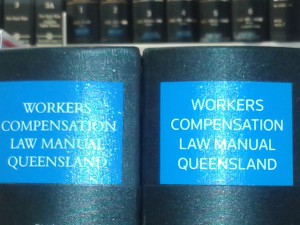Qld govt likely to scrap workers comp thresholds: Kehoe
 Michael Kehoe is a barrister and the co-author of the Workers Compensation Law Manual Queensland. He has previously worked with WorkCover, Qld. In the wake of new government in Qld, Michael discusses what changes could be expected to the workers compensation scheme in the state in the near future.
Michael Kehoe is a barrister and the co-author of the Workers Compensation Law Manual Queensland. He has previously worked with WorkCover, Qld. In the wake of new government in Qld, Michael discusses what changes could be expected to the workers compensation scheme in the state in the near future.
With the new Labor government at the helm in Queensland, the removal of “thresholds” in the Workers’ Compensation and Rehabilitation Act 2003 seems imminent.
On 17 October 2013, the then LNP state government introduced “thresholds” into the Workers’ Compensation and Rehabilitation Act 2003.
The consequence of this was that injured workers in Queensland required a whole-person impairment (referred to as a Degree of Permanent Impairment) from 29 October 2013 onwards (being the date of assent).
The previous ALP state government had been faced with the difficulty of WorkCover Queensland struggling financially and this had been discussed in Parliament in September 2009.
The then ALP statement government made a number of amendments to the Workers’ Compensation and Rehabilitation Act 2003, including the introduction, inter alia, of Injury Scale Values for awards of general damages, the payment of costs by unsuccessful plaintiffs at trial and the removal of the statutory duty when pursuing common law trials.
While these amendments were not warmly welcomed, they were considered necessary and balanced.
The LNP government, led by premier Campbell Newman, instigated a review of the workers’ compensation system in Queensland.
Significantly, the review (titled “Inquiry into the Operation of Queensland Workers’ Compensation Scheme”, Report No. 28 of the Finance and Administration Committee) essentially endorsed the changes made by the previous ALP state government.
The Finance and Administration Committee was largely made up of members of the LNP.
Despite the recommendations of his own party in May 2013, the Premier and his Attorney General, Jarrod Bleijie, largely ignored those recommendations and introduced thresholds.
The then opposition leader, Annastacia Palaszczuk, promised that the thresholds would be removed should her party win government in 2015.
With ALP in power now, the removal of thresholds seems imminent.
I hold the view that WorkCover Queensland, and Queensland self-insurers generally, are the best run and managed workers’ compensation schemes in Queensland.
As noted by the Finance and Administration Committee in 2013, the cost of workers’ compensation insurance in Queensland remains the cheapest or equal cheapest in Australia.
Other systems, particularly those introduced in Victoria and New South Wales, have led to significant long tail claims and the increase in costs.
I share the view of the Finance and Administration Committee that WorkCover Queensland (as well as the self-insurers) now pursues appropriate contested litigation such that injured workers (and their lawyers) now know not to run frivolous and unmeritorious claims.
Moreover, the amendments to the Act made in 2010 by the then ALP government were appropriate, worked and evened the playing field.
The only issue that remains is whether or not the ALP government can or will retrospectively remove the thresholds. While the removal of thresholds appeals, it may be that WorkCover and the self-insurers have not budgeted on this and would be placed in some peril were the thresholds removed retrospectively.
Whatever the case may be, I look forward to the removal of the thresholds which were introduced despite the LNP-dominated Finance and Administration Committee’s recommendations.
Note: Mr Kehoe puts on the record that he is a former employee of WorkCover Queensland. However, he has been at the Private Bar for almost 12 years and considers that WorkCover is a very well run organisation.